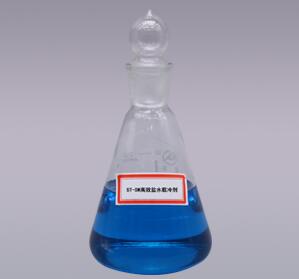| 中文 | ENGLISH |
 |
Shanghai Kulan New Material Technology Co., Ltd.Committed to providing effective and stable thermal energy management for the semiconductor industry |
 |
Phone
19512114705 |
| Home | Products | Application | News | Environmental | Service | About Us | Contact |
|
NEWS
新闻资讯
|
What are the specific differences between refrigerants refrigerants
Refrigerant is the working fluid in refrigerators, also known as refrigeration working fluid. Refrigerant circulates within the refrigerator, exchanging energy with the outside world through its own thermal state, thereby achieving refrigeration. Refrigerant is an intermediate medium used to transfer cooling capacity in indirect cooling refrigeration devices. The refrigerant carrier first undergoes heat exchange with the refrigerant in the evaporator to obtain cooling capacity, and then uses a pump to transport the cooled refrigerant carrier to various cooling locations. In a refrigeration device operating in indirect cooling mode, the substance that transfers the heat of the cooled object to the evaporating refrigerant is called a refrigerant. Refrigerant is usually a liquid and does not undergo phase change during heat transfer. However, some refrigerants are gas or liquid-solid mixtures, such as binary ice. Commonly used refrigerants include water, salt water, ethylene glycol or propylene glycol solution, dichloromethane and trichloroethylene, generally excluding chloroform. This is usually used as a refrigerant, which is only used as a refrigerant during direct cooling. A large amount of refrigerants and refrigerants used for direct refrigeration are generally not environmentally friendly, such as Freon and ammonia, so indirect refrigeration is an energy-saving and environmentally friendly way. Disadvantages of coolant substitutes such as salt water, ethylene glycol, and dichloromethane. It has small refrigeration capacity, high consumption, narrow temperature range, metal corrosion and hidden dangers. The characteristics of glacier refrigerants are: low dosage, strong cooling capacity, wide temperature range, unparalleled rust resistance, safety, non-toxic, and environmental protection. Indicators to consider when selecting refrigerants: Corrosion prevention: The lower the corrosiveness, the better the long-term safe and stable operation. Low viscosity: The lower the viscosity during use, the lower the power demand of the power equipment, the thinner the thickness of the coolant film, and the better the heat transfer efficiency. Low freezing point: In the optimal state of liquid flow at low temperatures. High specific heat: The higher the specific heat, the more cold energy is transported. The lower the power demand of the device, the farther the cold energy transmission distance. High thermal conductivity: High thermal conductivity, high heat exchange efficiency, small heat exchange area, and low power demand for power equipment. High boiling point: Refrigerant relies on sensible heat to carry heat, so it is required that the refrigerant is in a liquid state at operating temperature and does not undergo phase change. Non toxic: It should be non-toxic and harmless to the human body, food, and environment, and will not cause other substances to change color, taste, or spoil.  |
|